Clancy Tucker's Blog, page 205
November 14, 2016
15 November 2016 - CLANCY TUCKER PHOTOGRAPHY

CLANCY TUCKER PHOTOGRAPHY
G'day folks,
I have never been busier. However, I still manage to escape the world of publishing to take photographs. Here are a few of my latest.

















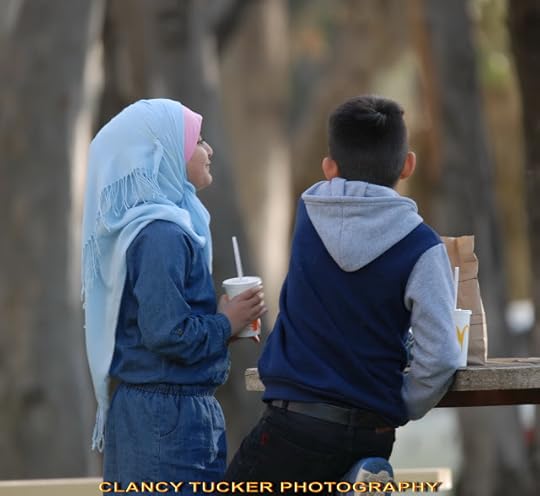

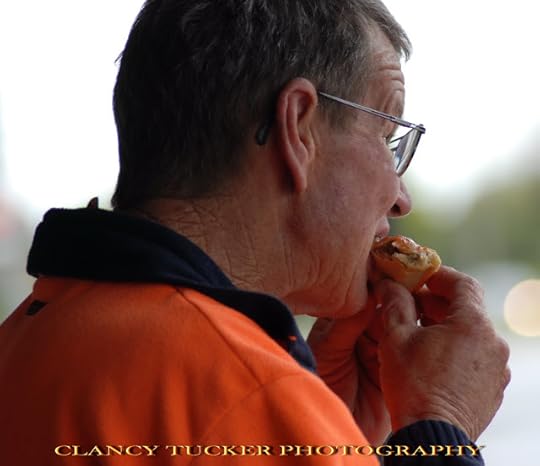


Clancy's comment: There ya go, folks. Always seeking something different to snap. If you want to see more, check out this website where I have many photographs:
YOUPICI'm ...
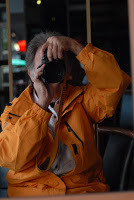

Published on November 14, 2016 13:36
November 13, 2016
14 November 2016 - BEN CHIFLEY
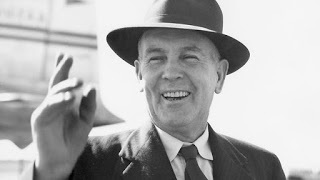
BEN CHIFLEY
G'day folks,
Welcome to the life of a former Aussie Prime Minister. Joseph Benedict "Ben" Chifley was an Australian politician who was the 16th Prime Minister of Australia from 1945 to 1949.
Prime Minister from 13 July 1945 to 19 December 1949
When Prime Minister John Curtin died in 1945, Chifley was elected to take over, and kept his job as Treasurer.
After the war, Chifley introduced a number of social welfare reforms and laid a strong basis for post-war reconstruction, but eventually lost the support of the electorate because people disagreed with too much government regulation of the economy.
He was a humble man who never forgot the fact that he had been a train driver before he was a politician.
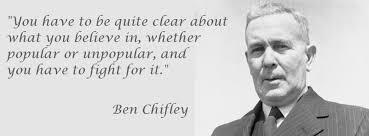
Beginnings
Joseph Benedict Chifley - always known as Ben - was born in Bathurst, NSW, on 22 September 1885. Chifley's parents were both of Irish descent. His father, Patrick Chifley, was a blacksmith. His mother was Mary Anne Corrigan.
He lived and worked on his grandfather's farm at Limekilns near Bathurst until he was 13, sometimes attending the local bush school. He then spent two years at the Patrician Brothers School, Bathurst, before starting full-time work as a cashier's assistant in a general store.
He joined the NSW Government Railways as a shopboy at 17, then worked as a cleaner and fireman before becoming a locomotive driver. At 24 he was the youngest first-class locomotive driver in the NSW railways. He was also an outstanding rugby union player.
At 27 he became an advocate for his union, the Locomotive Enginemen's Association. He was dismissed from the Railways because of his part in the union's national strike in 1917, but was reinstated as a cleaner on appeal.After deciding to fight for unionists' rights by entering parliament, he prepared himself by learning economics and finance. He became a highly competent and successful private investor and financial manager. He endeavoured to gain Labor preselection for state seats in NSW in 1922 and 1924 without success.
In 1914 he married Elizabeth McKenzie, but they had no children.
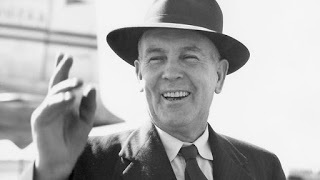
Entry to federal parliament
Chifley became a candidate for election to the House of Representatives in his home district electorate, Macquarie, in 1925 - but lost. He won the seat at the 1928 election and retained it in 1929 when James Scullin's Labor government came to power. He became Scullin's Minister for Defence.
He became embroiled in the long-running conflict within NSW Labor over policies for dealing with the Great Depression, which began in 1929. He supported the 'Federal' faction of the party against the 'Lang' faction (a group led by JT Lang, the NSW Premier.)
Chifley lost his seat in the electoral landslide against Labor in 1931. Determined to defeat Lang, he contested Lang's seat of Auburn at the 1935 state elections, but lost. As State President of 'Federal' Labor, Chifley was instrumental in restoring unity to NSW Labor in 1936. He regained his Macquarie seat in 1940 and held it through the next four general elections: in 1943, 1946, 1949 and 1951.
During his nine years of federal politics in the 1930s, he added to his reputation as a fine economist and administrator by serving as a member of the Royal Commission on Monetary and Banking Systems in 1935-1936, and as the director of labour supply and administration for the Department of Supply from 1939 to 1940.
Chifley became Treasurer in John Curtin's Labor government, with major responsibility for gearing the economy to wartime production. He remained Treasurer until his loss of government in 1949. He also served as Minister for Post-war Reconstruction from 1942 to 1945.
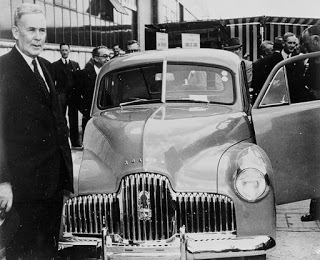
Prime Minister Ben Chifley
Chifley became Prime Minister following Curtin's death, succeeding the caretaker Prime Minister, Francis Forde, on 13 July 1945.
He visited the UK, USA, Japan and New Zealand while on four overseas trips to attend conferences from 1946 to 1949.
Chifley was responsible for accelerating post-war reconstruction and in 1945 the Commonwealth government became a signatory to the charter setting up the United Nations. Chifley's government announced its objective of raising the Australian population to 20 million and signed an agreement with the UK for free and assisted passages for immigrants. The War Service Land Settlement Act introduced the soldier settlement scheme. The first Holden car was 'launched' by Chifley in 1948 and the Snowy Mountains Authority was founded in 1949.
He retained office at the 1946 elections but lost to Robert Menzies' Liberal-Country Party coalition in December 1949. The defeat followed a series of events and issues through which Labor's popular support declined. These included a long-running coal strike, Communist influence in the union movement, the continuation of wartime rationing controls over the sale of petrol, and Chifley's personal crusade to nationalise private sector banking.

Later political life
Chifley continued in parliament as Leader of the Opposition after his defeat by Menzies. He died on the way to hospital after a heart attack in his hotel room in Canberra, 13 June 1951, while a ball celebrating the Jubilee of Commonwealth parliament was in progress in Parliament House.

Clancy's comment: Another man who had an interesting life; a train driver, not a lawyer.
I'm ....


Published on November 13, 2016 13:24
November 12, 2016
13 November 2016 - FACTS ABOUT THE NUREMBERG TRIALS
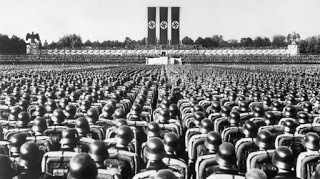
FACTS ABOUT THE NUREMBERG TRIALS
G'day folks,
On October 1, 1946, an international tribunal in Nuremberg, Germany, sentenced 12 high-ranking Nazis to death for war crimes. Here are some interesting facts.
The Bavarian city that spawned the rise of the Third Reich by hosting massive Nazi Party propaganda rallies in the 1920s and 1930s was deemed by the victorious Allies to be a fitting place to stage its symbolic death. Although World War II had left much of the city in rubble, the Palace of Justice—which included a sizable prison capable of holding 1,200 detainees—remained largely undamaged and was chosen to host the trials once German prisoners completed the work of enlarging its courtroom.
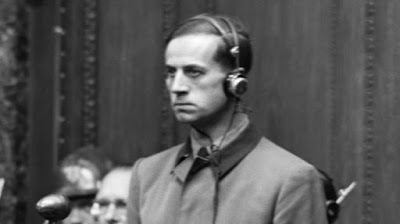
The Nuremberg Trials marked a milestone in the establishment of international law. While there had been prior prosecutions of war crimes in history, such as that of Confederate army officer Henry Wirz, those had been conducted according to the laws of a single country. Until the Nuremberg Trials, there had been no precedent for an international trial of war criminals. Rather than use a single judge and jury, the trial of high-ranking Nazi leaders was conducted by a panel of four judges. The United States, Soviet Union, France and Great Britain each supplied a main judge and an alternate, and Britain’s Lord Justice Geoffrey Lawrence presided. The Nuremberg Trials served as a precedent for the subsequent prosecution of war crimes in Japan and led to the establishment of the United Nations Genocide Convention and Universal Declaration of Human Rights in 1948 as well as the Geneva Convention on the Laws and Customs of War in 1949.
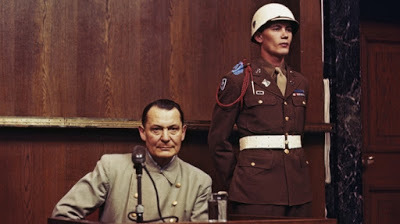
The London Charter of the International Military Tribunal, which set the laws and procedures for the conduct of the Nuremberg Trials, defined three categories of crimes: crimes against the peace, war crimes and, for the first time, crimes against humanity, which included murder, enslavement or deportation of civilians or persecution on political, religious or racial grounds.
With the defendants, judges and lawyers speaking a mix of German, French, English and Russian, a language barrier threatened to bog down the proceedings. However, the development of a new instantaneous translation system by IBM allowed every trial participant to listen via headsets to real-time translations of the proceedings. Yellow lights at microphones warned speakers to slow down for the benefit of the translators, while red lights signaled the need to stop and repeat statements. The simultaneous translation system allowed the trial to be conducted four times faster than if consecutive translation was used.
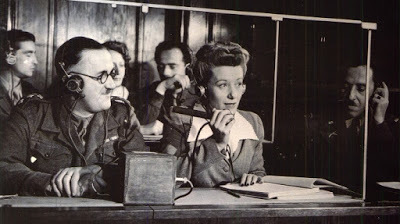
President Harry Truman asked Robert Jackson, an associate justice of the Supreme Court, to serve as the chief American prosecutor at the international tribunal. Jackson accepted the offer but was adamant that the proceedings not be a show trial. “If we want to shoot Germans as a matter of policy, let it be done as such, but don’t hide the deed behind a court,” he wrote. Jackson’s colleague, Chief Justice Harlan Stone, did not think highly of the proceedings. “Jackson is away conducting his high-grade lynching party in Nuremberg,” he wrote privately to a friend in 1945. “I don’t mind what he does to the Nazis, but I hate to see the pretense that he is running a court and proceeding according to common law. This is a little too sanctimonious a fraud to meet my old-fashioned ideas.”
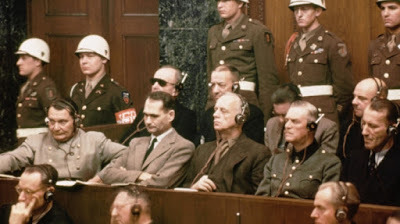
Raphael Lemkin, a Polish-born lawyer who served as an advisor to Jackson, is credited with coining the term “genocide” in 1944 to describe the Nazis’ planned extermination of Jews. The word is an amalgam of “genos,” the Greek word for “tribe” or “race,” and “-cide,” Latin for “killings.” Lemkin, who lost nearly 50 relatives in the Holocaust, defined genocide as “a coordinated plan of different actions aimed at the destruction of essential foundations of the life of national groups, with the aim of annihilating the groups themselves.” The Nuremberg Trials marked the first-ever prosecutions for genocide.Of the 22 high-ranking Nazis who stood trial for war crimes before the international tribunal, 12 were sentenced to death by hanging, including Martin Bormann, the personal secretary to Nazi leader Adolf Hitler who is now believed to have committed suicide in May 1945, in absentia. Seven others, including Hitler’s former deputy Rudolf Hess, received prison sentences ranging from 10 years to life, but three were acquitted.
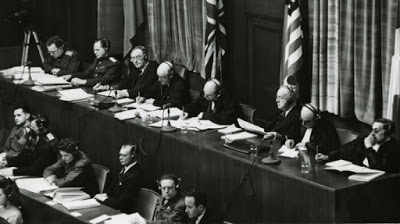
The highest-ranking Nazi to survive the war, Gestapo founder and Luftwaffe commander-in-chief Herman Goering took his own life on the night of October 15, 1946, just hours before his scheduled execution.Dressed in silk pajamas, the man instrumental in ordering the Holocaust cheated the noose by ingesting a small glass capsule of potassium cyanide that he had smuggled into prison. In a suicide note to his wife, Hitler’s heir apparent wrote that he would be willing to die by firing squad but not in such an undignified manner as hanging. “I have decided to take my own life, lest I be executed in so terrible a fashion by my enemies,” Goering wrote.
After Goering’s suicide, the Allies immediately ordered the remaining 10 condemned men to be handcuffed to guards and dispatched clergymen to administer last rites. In the early morning hours of October 16, 1946, the Nazi war criminals were hanged one-by-one from a scaffolding erected in a prison gymnasium. “I hope that this execution will be the last act of the tragedy of the Second World War,” said Arthur Seyss-Inquart, the last of the 10 men to be hanged, as he was led to the gallows. The executions, which took nearly two hours to complete, were administered by the U.S. Army’s official hangman, Master Sergeant John C. Woods. “I wasn’t nervous,” the chief executioner, who had overseen nearly 350 hangings in a 15-year career, told Time magazine. “A fellow can’t afford to have nerves in this business.” The magazine reported, however, that witnesses said “the executions had been cruelly bungled” with the ropes too short and the trap doors too small, resulting in deaths of slow strangulation. The U.S. Army denied the report.
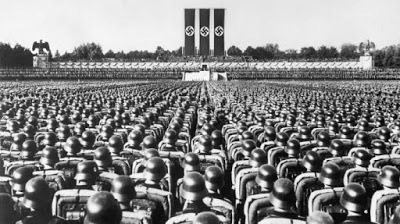
While the trial of the 22 high-ranking Nazi leaders before the international tribunal was the most notable of the judicial proceedings held at Nuremberg, 12 additional trials occurred there between 1946 and 1949. Among the nearly 200 other Nazis tried at Nuremberg were doctors accused of conducting medical experiments on prisoners of war, lawyers and judges charged with implementing the Nazis’ “racial purity” program through eugenic and racial laws, military officers accused of atrocities against prisoners of war and concentration camp inmates and industrialists who profited from slave labor and plundered occupied countries. Growing differences among the Allies as the Cold War began caused the subsequent trials to be conducted before U.S. military tribunals instead of once again before a panel of international judges.

Clancy's comment: I still think about those who escaped and led a so-called 'normal life' after being involved in massive atrocities. We can only hope that Karma caught up with them.
I'm ...


Published on November 12, 2016 13:04
November 11, 2016
12 November 2016 - MOTHER NATURE

MOTHER NATURE
G'day folks,
Time to sit back and admire some of the best that nature provides.

















Clancy's comment: And, you can only imagine what they look like through the lens of a camera - Simply gob smacking!
I'm ...


Published on November 11, 2016 13:12
November 10, 2016
11 November 2016 - JIMMY CLIFF

JIMMY CLIFF
G'day folks,
Welcome to the life of a famous reggae star.
Jimmy Cliff wasn’t reggae’s biggest star, but he was its first. Though he spent the better part of his career in the all-eclipsing shadow of Bob Marley, Jimmy Cliff is the man who paved the way out of Kingston for all who followed. And while so many of the genre’s key architects are sadly no longer with us, Jimmy Cliff remains a vibrant artist, giving us a direct line of sight into the birth of reggae. There is nobody alive today who was more instrumental to the proliferation of Jamaican music on a global scale.
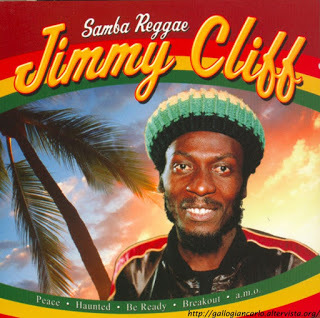
Born and raised in the small town of Somerton, St. James Parish, southeast of Montego Bay, Cliff was inspired to take up songwriting by the American R&B that blasted out of sound systems in the neighborhood around him. He relocated to the capital to attend Kingston Technical School, but spent the better part of his time outside the classroom passing his homemade recordings off to area producers. He had little success until he convinced the proprietor of an area record store, Leslie Kong, to become his producer. Kong agreed and helped Cliff score his first hit at age 14.
“Hurricane Hattie” made Cliff a local sensation in 1962, its mellow vibe, sunny disposition, and uniquely accented backbeat representing an inflection point in Jamaica’s music. Its incorporation of mento, calypso, and American R&B makes it among the earliest examples of reggae music. His subsequent releases enjoyed the same level of success—so much so that he was selected to represent his country at the 1964 World’s Fair, an appearance which earned him a deal with Island Records.
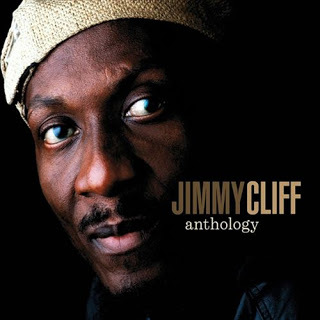
His true break into global stardom came in 1972, when Cliff starred in the classic Jamaican blaxploitation film, The Harder They Come. In addition to his compelling performance, Cliff provided the soundtrack with a few of his most dramatic performances (“Many Rivers to Cross,” “The Harder They Come”). He was joined by a collection of artists and songs that would define the genre for international audiences.

It would also help to bridge the gap between Jamaica and record hounds in America and the U.K. Bob Marley would ultimately walk across this bridge. But as Marley’s star grew, Cliff steadily persevered as one of the genre’s most consistent and independent artists, exploring rock, pop, African music, punk, and electronica. A member of the Rock and Roll Hall of Fame and a Grammy winner just two years ago, Cliff is also the only musician, living or otherwise, ever to be awarded Jamaica’s Order of Merit.

Clancy's comment: Go, Jimmy!
I'm ...


Published on November 10, 2016 11:53
November 9, 2016
10 November 2016 - WISE QUOTES

WISE QUOTES
G'day folks,
Time to check out some serious and humorous quotes.




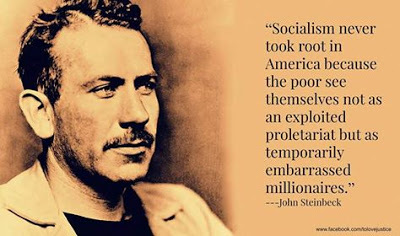
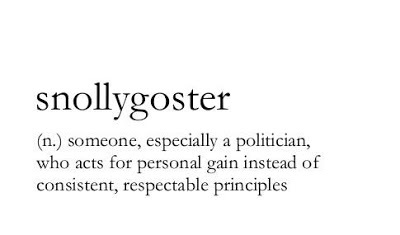


















Clancy's comment: A few good chuckles here.
I'm ...


Published on November 09, 2016 12:03
November 8, 2016
9 November 2016 - CHALKBOARD ART
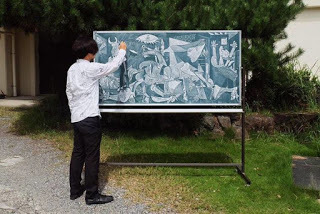
CHALKBOARD ART
G'day folks,
Here is an interesting post for you illustrators, and those of us who cannot draw for peanuts, compliments of Leilani. You may recognise some of his work.
In a country where most of our schools have whiteboards and computer screens, it is difficult to appreciate chalk art. As a former English language instructor in rural Japan, I was delightfully introduced to the kokuban art, blackboard art, through my students.
Between each period, we would enjoy a 10-minute break, and in that time, they produced drawings of their favorite characters from Pokémon, Kuroko's Basketball, and other TV shows. They would also create imaginary scenes or draw me. Now, these were nothing like the stick figures I was capable of, but something I would have been willing to pay for if I had a chance to keep them.
Today, an art teacher based in Nara has blown the competition out of the water with his drawings. Hirotaka Hamasaki, also known as Hamacream, has reproduced work by Hokusai and Leonardo da Vinci.
We're curious about how anyone could take such a temporary art so seriously, but perhaps there's a beauty in the transience. After all, there are florists and pastry chefs, artists who create pieces that'll soon disappear.
Check out some of Hamacream's work below.
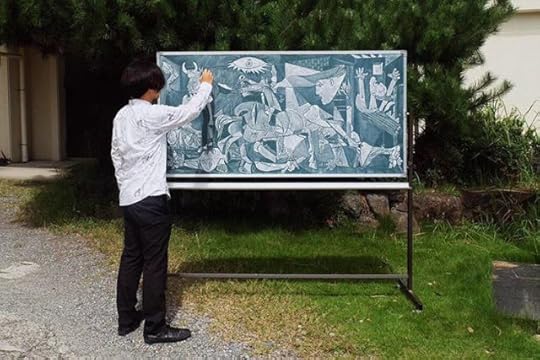
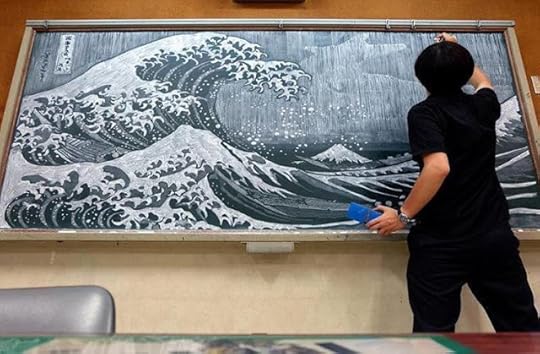
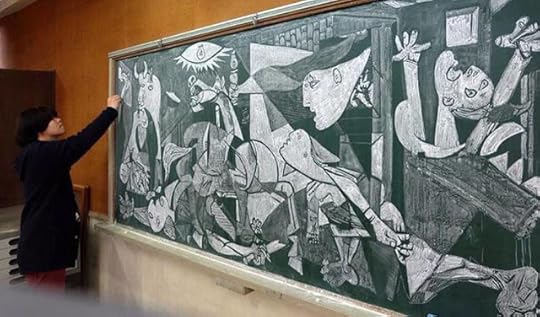
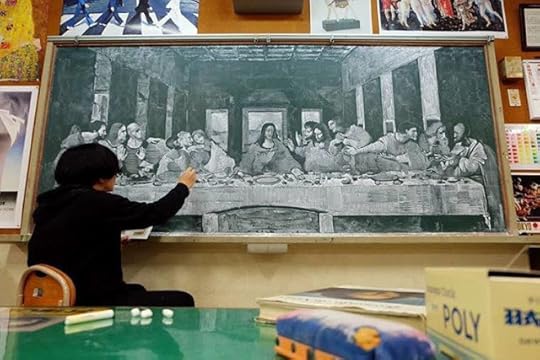
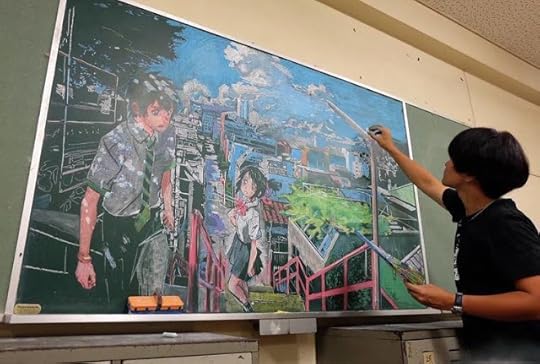

Clancy's comment: Bloody brilliant, eh?
I'm ...


Published on November 08, 2016 12:02
November 7, 2016
8 November 2016 - MOVING PICTURES

MOVING PICTURES
G'day folks,
Don't ya just love that pussycat? I sure do, and here are some more of these amazing creations.


[image error]
[image error]














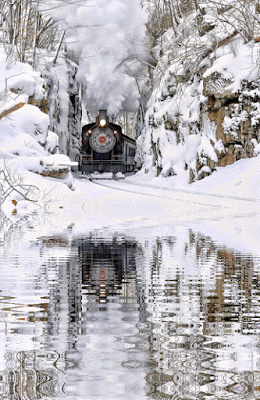

Clancy's comment: I just love 'em.
I'm ... [image error]

Published on November 07, 2016 11:58
November 5, 2016
6 November 2016 MAGICAL FIREFLIES

MAGICAL FIREFLIES
G'day folks,
These are something I'd like to see and photograph.
Something magical happens during summer nights in Japan. Cities like Tokyo, Kyoto, and Hiroshima hold firefly festivals where people gather to see the hotaku or fireflies light up the evening skies.
Around the country, photographers visit the magical forests in remote areas from the months of May and June; all for an opportunity to photograph these glowing insects in action. Fireflies thrive in damp environment with the ideal time for them to glow being between 7am to 9pm.
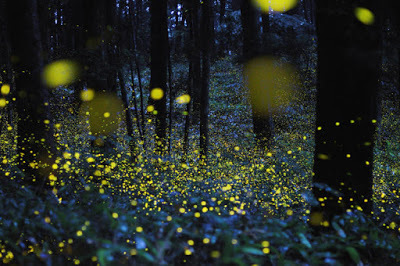
These shutterbugs have to be very patient to get their desired shots of the fireflies as the insects will hide from other light forms. Another challenge that comes with photographing fireflies is knowing when to take the photo as the nocturnal insect use their lights intermittently. Scientists believe the female emits flashes to communicate with males.
This time of year is also mating season for fireflies.
There are many species of fireflies in Japan. The two common ones are the genji-botaru and heike-botaru. The little bugs were named after rivalling clans during the Heian period which lasted from 794 to 1185.

Fireflies hold a special place in Japanese culture. It has served both as a symbol of love and war. Some believed fireflies were the souls of soldiers who lost their lives during battle.
Fireflies live anywhere from seven to 10 days.

Photographers will use a long exposure shots to catch the intermitten bioluminescence.
Clean streams, no wind, and humidity are the perfect spot to find fireflies. Sometimes the female and male will light up in unison. Female heike-botaru will flash more often once she has found a male she wants to mate with.
 There are approximately 45 types of fireflies in Japan. Although, only about 14 actually light up.
There are approximately 45 types of fireflies in Japan. Although, only about 14 actually light up.Many of the photographers start setting up their equipment during the day. Aside from shying away from other light forms, fireflies are known to like being around quiet and tranquil areas.

The fireflies give off a glittering light show of yellow, green, and even red colours.
Shutterbugs will wait hours as well as days to get the perfect shot. Time-lapse photos are layered together during production to make it appear like there are thousands of fireflies. This allows people to see the beauty of the fireflies through the naked eye.
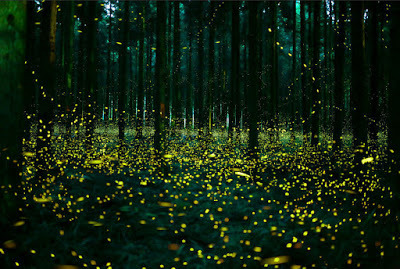

Clancy's comment: Amazing nature, eh?
I'm ...


Published on November 05, 2016 14:32
November 3, 2016
4 November 2016 - ONE RANDOM ACT

ONE RANDOM ACT
G'day folks,
I love random acts of kindness. There should be more of them. Here is one you might like.
The golden years are a time for the elderly to take a break and enjoy life. This is the age where seniors get to do the things they were unable to do in their youth because of work or finances. Still, many people continue to work past the standard age of 65 not because they want to but because they have no other choice.
Fidencio Sanchez has been selling popsicles in Chicago’s Little Village neighbourhood for the past 23 years. The 89-year-old pushes his freezer cart in the blistering hot and freezing temperatures to help support himself and his wife. On a good day, Sanchez was able to bring home $40 to $50. That all changed when a man who grew up in Chicago was driving by.
Joel Cervantes Macías was so moved by Sanchez pushing his cart that he bought 20 paletas, made of fresh fruit juice and fruit chunks, and paid the man $50. Cervantes Macías shared a photo he took of the man on Facebook, his post was what got the ball rolling to change Sanchez’s life.

"I feel my body is starting to give up on me. At some point, it's not going to have the capacity that it used to," Sanchez told CNN.
His wife Eladia Sanchez also worked selling paletas but due to her health she stays home now.
Cervantes Macías' friend, Joe Loera, saw his post on Facebook. Loera suggested they start a GoFundMe page to raise funds to help Sanchez and his wife.The friends initially set their goal at $3,000. Within hours people were donating $5, $10, $20 from all over the world.
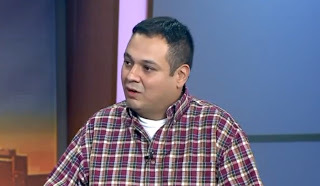
"It broke my heart seeing this man who should be enjoying retirement still working at this age," says Cervantes Macías.
Sanchez had retired from selling the Mexican popsicles after his daughter passed away this year.
Sanchez still gets emotional when he talks about losing his only daughter.
"When she died I felt so much pain. I thought, 'What am I going to do now?'"says Sanchez.
"I think the picture pulled at a lot of heartstrings ... and that is one of the reasons a lot of people are donating. It shows that people appreciate hard work," explains Cervantes Macías.
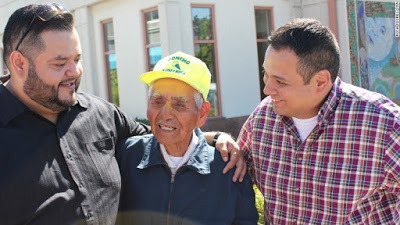
The campaign raised $384,290, the largest for an Illinois recipient. Sanchez was orphaned as a baby in Morelos, Mexico where he worked since he was 13 years old. He moved to the United States in 1990 selling the Mexican popsicles.

Clancy's comment: As I said, there should be more of them. Let's share what we have.
I'm ...


Published on November 03, 2016 13:20



